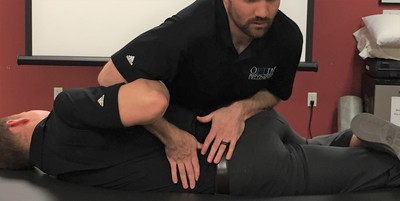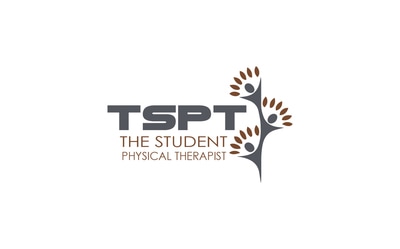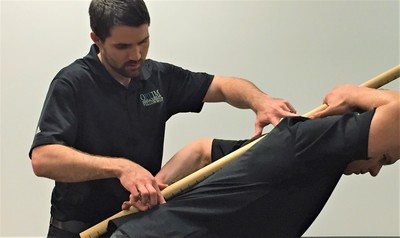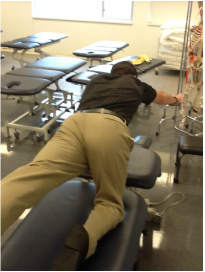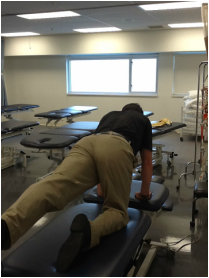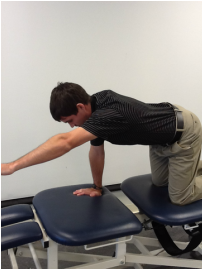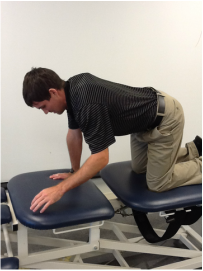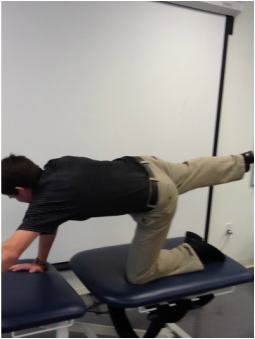- Home
- About Us
- TSPT Academy
- Online Courses
-
Resources
- Newsletter
- Business Minded Sports Physio Podcast
- Day in the Life of a Sports PT
- Residency Corner
-
Special Tests
>
-
Cervical Spine
>
- Alar Ligament Test
- Bakody's Sign
- Cervical Distraction Test
- Cervical Rotation Lateral Flexion Test
- Craniocervical Flexion Test (CCFT)
- Deep Neck Flexor Endurance Test
- Posterior-Anterior Segmental Mobility
- Segmental Mobility
- Sharp-Purser Test
- Spurling's Maneuver
- Transverse Ligament Test
- ULNT - Median
- ULNT - Radial
- ULNT - Ulnar
- Vertebral Artery Test
- Thoracic Spine >
-
Lumbar Spine/Sacroiliac Joint
>
- Active Sit-Up Test
- Alternate Gillet Test
- Crossed Straight Leg Raise Test
- Extensor Endurance Test
- FABER Test
- Fortin's Sign
- Gaenslen Test
- Gillet Test
- Gower's Sign
- Lumbar Quadrant Test
- POSH Test
- Posteroanterior Mobility
- Prone Knee Bend Test
- Prone Instability Test
- Resisted Abduction Test
- Sacral Clearing Test
- Seated Forward Flexion Test
- SIJ Compression/Distraction Test
- Slump Test
- Sphinx Test
- Spine Rotators & Multifidus Test
- Squish Test
- Standing Forward Flexion Test
- Straight Leg Raise Test
- Supine to Long Sit Test
-
Shoulder
>
- Active Compression Test
- Anterior Apprehension
- Biceps Load Test II
- Drop Arm Sign
- External Rotation Lag Sign
- Hawkins-Kennedy Impingement Sign
- Horizontal Adduction Test
- Internal Rotation Lag Sign
- Jobe Test
- Ludington's Test
- Neer Test
- Painful Arc Sign
- Pronated Load Test
- Resisted Supination External Rotation Test
- Speed's Test
- Posterior Apprehension
- Sulcus Sign
- Thoracic Outlet Tests >
- Yergason's Test
- Elbow >
- Wrist/Hand >
- Hip >
- Knee >
- Foot/Ankle >
-
Cervical Spine
>
- I want Financial Freedom
- I want Professional Growth
- I want Clinical Mastery
Spine Rotators & Multifidus Test
Purpose: To determine the ability of the patient to recruit and utilize the multifidi and rotator muscles while undergoing movements of the extremities.
Test Position: Quadruped.
Performing the Test: The pelvis is placed in a neutral position and is maintained there throughout the various testing portions. The test is given a 5 if the patient is able to perform contralateral arm and leg lifts bilaterally without the pelvis deviating. The test is given a 4 if the patient is able to maintain a neutral pelvis while performing a single leg lift, but unable to perform contralateral arm and leg lifts. The test is given a 3 if the patient is able to maintain a stable pelvis while doing an arm lift but unable to do so with leg lifts. The test is given a 2 if the patient is unable to maintain a neutral pelvis with an arm lift, but is able still able to lift arm or leg off the table. The test is given a 1 if the patient cannot lift an arm or leg off the table.
Diagnostic Accuracy: Unknown.
Importance of Test: Due to the poor posture people regularly use, the proper muscles of the core (lumbar multifidi, diaphragm, pelvic floor, and transversus abdominus) are rarely used and neuromuscular control is decreased. This test is effective in determining the ability of the patient to utilize these muscles during extremity movement. It may identify a major impairment in those with low back pain.
Note: tests should only be performed by a properly trained health care practitioner.
Test Position: Quadruped.
Performing the Test: The pelvis is placed in a neutral position and is maintained there throughout the various testing portions. The test is given a 5 if the patient is able to perform contralateral arm and leg lifts bilaterally without the pelvis deviating. The test is given a 4 if the patient is able to maintain a neutral pelvis while performing a single leg lift, but unable to perform contralateral arm and leg lifts. The test is given a 3 if the patient is able to maintain a stable pelvis while doing an arm lift but unable to do so with leg lifts. The test is given a 2 if the patient is unable to maintain a neutral pelvis with an arm lift, but is able still able to lift arm or leg off the table. The test is given a 1 if the patient cannot lift an arm or leg off the table.
Diagnostic Accuracy: Unknown.
Importance of Test: Due to the poor posture people regularly use, the proper muscles of the core (lumbar multifidi, diaphragm, pelvic floor, and transversus abdominus) are rarely used and neuromuscular control is decreased. This test is effective in determining the ability of the patient to utilize these muscles during extremity movement. It may identify a major impairment in those with low back pain.
Note: tests should only be performed by a properly trained health care practitioner.
Test Failure: inability to maintain neutral pelvis during lift (attempt lower level of assessment at this point)
Copyright © The Student Physical Therapist LLC 2023

